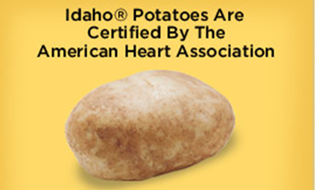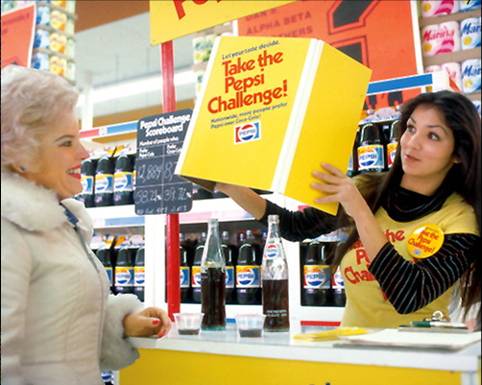Entries from February 1, 2013 - February 28, 2013
The Trademark Registration Process from Start to Finish
New clients often ask what it takes to get a federal trademark registration. Here’s a quick rundown:
1. Trademark clearance - The first step entails searching the U.S. Patent and Trademark Office’s database to find previously-filed applications and registrations to determine if your trademark would create a likelihood of confusion. If the marks are similar and the goods or services are similar, the PTO’s examining attorney will deny your application. It makes sense to know what your chances are of getting your trademark registered before you file (and pay the fees). Generic, descriptive, and other types of marks also will be refused and, therefore, risk not being registered.
2. Filing the application - It’s easy to fill out the PTO’s interface. The challenge is making judgment calls along the way, including who owns the application; whether any part of the mark needs to be disclaimed as being unprotectable; how to describe the associated goods or services; what the PTO will accept as proof of use; and whether the mark is generic, descriptive, likely to cause confusion with an existing application or registration, or is subject to any of the other statutory bars to registration. The PTO charges $275 per class of goods or services (if you avail yourself of one of its pre-approved descriptions) and $325 if you write your own.
3. Examination - After filing, your application will sit in an electronic “in” box for a few months before anyone looks at it. When your time comes, an examining attorney will review your application for completeness and against the statutory bars to registration. The more common refusals are for being descriptive and for causing a likelihood of confusion with an existing application or registration. If the examining attorney objects, he or she will issue an “office action” explaining the basis for the refusal. You will then have six months to respond in an effort to address the deficiency or to change the examining attorney’s mind.
4. Publication - Once you clear the examination hurdle, you’re almost home free. The next step is the PTO publishes your mark for potential opposition by third parties. Once published, third parties have 30 days to file a notice of opposition, essentially starting a mini-lawsuit about whether you are entitled to your registration. Third parties can oppose based most commonly on claimed earlier trademark rights in a confusingly similar trademark. Opposition proceedings are decided by a three-judge panel of the Trademark Trial and Appeal Board, the PTO’s administrative law arm.
5. Notice of allowance - If you filed on an intent-to-use (reservation) basis, after clearing the examination and publication hurdles, the PTO issues a “notice of allowance.” That means your mark has been accepted subject to your proving that you have put your mark to use in connection with all of the goods or services listed in your application. You have six months to do so. The PTO charges $100 to process your proof of use. If you need extra time, you can literally buy some. The PTO charges $150 per class of goods to extend the time to file your proof of use by six months. You can keep paying for extensions every six months for up to three years. After that point, if you haven’t proven that you have put your mark to use, your application will be deemed to be abandoned — as if your application had never been filed.
6. Registration - If the PTO accepts your proof of use (if you filed on an intent-to-use basis) or if you cleared the examination and publication hurdles (if you filed on a use basis), the PTO will issue your registration. Congratulations — you’ve accomplished your goal. The filing-to-registration process takes at least 10-12 months.
7. Maintenance - After getting your registration, you’re in the clear for five years. But then you need to start making a series of periodic filings with the PTO to keep your registration current and, in one instance, to cut off potential attacks on your registration. Failure to do so can work to abandon your registration.
I hope this clarifies the process!
Idaho Potatoes? In Turkey?
 An Idaho potato. Grown in Idaho.
An Idaho potato. Grown in Idaho.
Idaho potatoes? Grown in Turkey?
Last week, NPR aired a story about the Idaho Potato Commission’s reaction to a Turkish company’s effort to register IDAHO in connection with agricultural seeds in Turkey.
But not for potatoes, the company insists. They just like the foreign-sounding name.
Idaho apparently doesn’t have much of a reputation in Turkey — yet. It just doesn’t want its brand to go the way of other geographic names that were lost to genericide. Like Brussels with its sprouts or Cheddar and its cheese.
The story quotes Seattle’s Bob Cumbow on Idaho’s chances of protecting its geographical indication.
“[T]he whole idea of having enforceable geographical indications is still in discussion and dispute. The standards are going [to] vary from country to country and for that reason it’s going to be hit or miss where you can enforce these.”
Idaho’s hoping for a hit in Turkey. It’s registered various IDAHO marks in ten countries. Turkey’s not one of them, but I imagine that might soon change.
Fair Use Doctrines Protect Lawful Use of Another's Trademark
 The Pepsi Challenge: Made possible by comparative fair use
The Pepsi Challenge: Made possible by comparative fair use
We covered fair use today in my trademark class, and it occurred to me I haven’t talked about it much here.
Fair use, in all its flavors, is a defense to trademark infringement and a host of other forms of trademark wrongs. It’s the First Amendment winning out in the tension between freedom of speech and the right of a trademark owner to avoid infringement, dilution, cybersquatting, and unfair competition.
Here’s a quick review (or introduction) to the most recognized forms of fair use.
Classic Fair Use - Also known as “statutory fair use” since it’s codified in the Lanham Act, classic fair use is the descriptive use of words that happen to be someone else’s trademark. Just because someone uses it as a descriptive trademark doesn’t mean you can’t use it to accurately describe your good or service. For example, if true, I can say my coffee is both the best and is from Seattle notwithstanding the SEATTLE’S BEST COFFEE trademark.
Collateral Use - Use of a mark that does not claim sponsorship of goods. It’s ok to say that you’re selling reconditioned FORD trucks as long as you don’t suggest your refurbishments are factory authorized.
Comparative Use - Use of another’s trademark to identify the mark owner’s product in comparative advertising. As long as the comparison isn’t misleading, it’s perfectly ok to compare PEPSI to COKE.
Nominative Fair Use - Nominative fair use uses the plaintiff’s trademark to refer to plaintiff’s good or service. If there’s no other reasonable way to refer to the plaintiff’s good or service, it’s ok to use the plaintiff’s mark to do so as long as you don’t use more of the mark than is necessary and don’t imply any connection with the plaintiff. For example, it’s ok to say the SEATTLE SUPERSONICS, rather than “that professional basketball team that left town and hopefully will come back.”
Critique or Reporting Fair Use - Traditional First Amendment use is also carved out of the Lanham Act, so you report on, talk about, criticize, or parody any trademark by name. This is what allows Yelp to exist.
Remember, these are not immunities; they are defenses to violations of the Lanham Act. That means they’re something to invoke if accused of engaging in a trademark wrong. But they also carve out activity that is perfectly legal.
